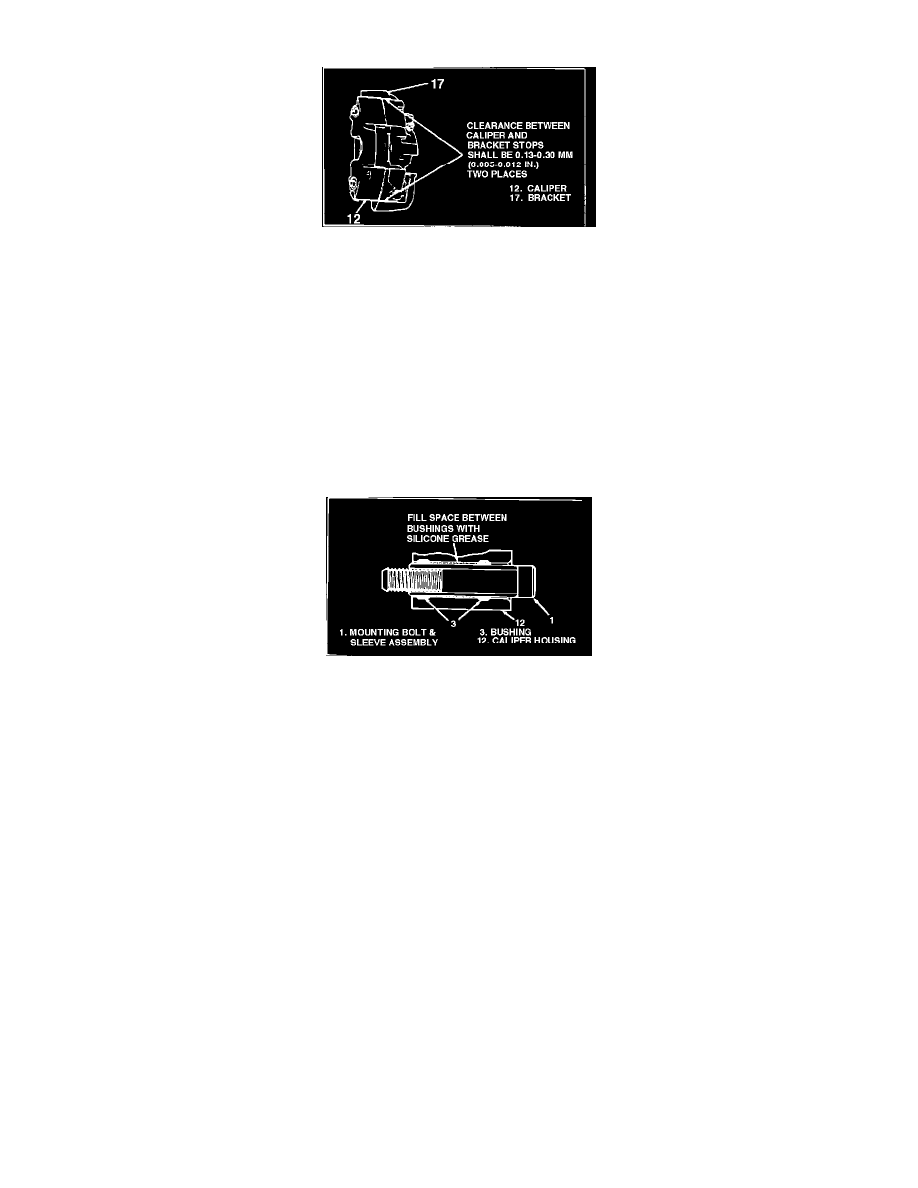Firebird V8-305 5.0L (1982)

clamp load over the surface of the hub.)
FIGURE 2 - CALIPER TO BRACKET CLEARANCE
2.
Caliper Drag
Disc brake pads (inboard and/or outboard) must drag sufficiently to contact high spots on the rotor when brakes are not applied. Caliper drag is usually
caused by interference between the caliper and the bracket stops on the steering knuckle or by binding of the caliper mounting bolt sleeve bushings.
(Caliper to bracket stop clearance should be checked with calipers in position and the mounting bolts torqued to specification. Clearance, measured at the
two locations shown in Figure 2, should be within specifications for the vehicle tested. If clearance is too great, the caliper may move and cause a
clunking noise when brakes are applied. If there is not enough clearance, the caliper may drag on the knuckle. Caliper bracket stops can be filed to adjust
clearance.)
When servicing calipers, caliper mounting bolts should be cleaned and inspected for rust corrosion. Always replace corroded mounting bolts; do not
attempt to polish away
FIGURE 3 - LUBRICATING CALIPER CAVITY
corrosion. To prevent binding, the mounting bolt sleeve bushings should be coated with silicone lubricant, part number 1052863 or equivalent. Refer to
Figure 3. A light application of silicone lubricant should also be applied to the caliper bracket stops.
1989 cars are equipped with a new caliper mounting bolt and sleeve bushing assembly that reduces the possibility of binding. New parts are available for
service of past model front wheel drive cars as follows:
Carline
Part Number
Bonneville, 6000 Heavy
18016163
Sunbird, Grand Am, 6000 Light
18016164
Parts are currently available from GMSPO.
3.
Abrasive Lining Material
For uneven rotor wear to occur, shoe lining material must be abrasive enough to cause wear while rubbing against rotor high spots. Some types of
brake lining material are more abrasive than others. The more abrasive the material, the more quickly wear will occur when rotor high spots contact
the lining.
Product engineering selects the type of brake lining material to be used based on the friction coefficient requirements of a particular vehicle. Brake
linings and other components should be replaced only with the parts recommended in the parts catalog or the latest service bulletin.
Correction
Test Drive
Before any diagnosis is performed, it is essential that the vehicle be road tested to determine the exact nature of the problem and to get a feel for the
